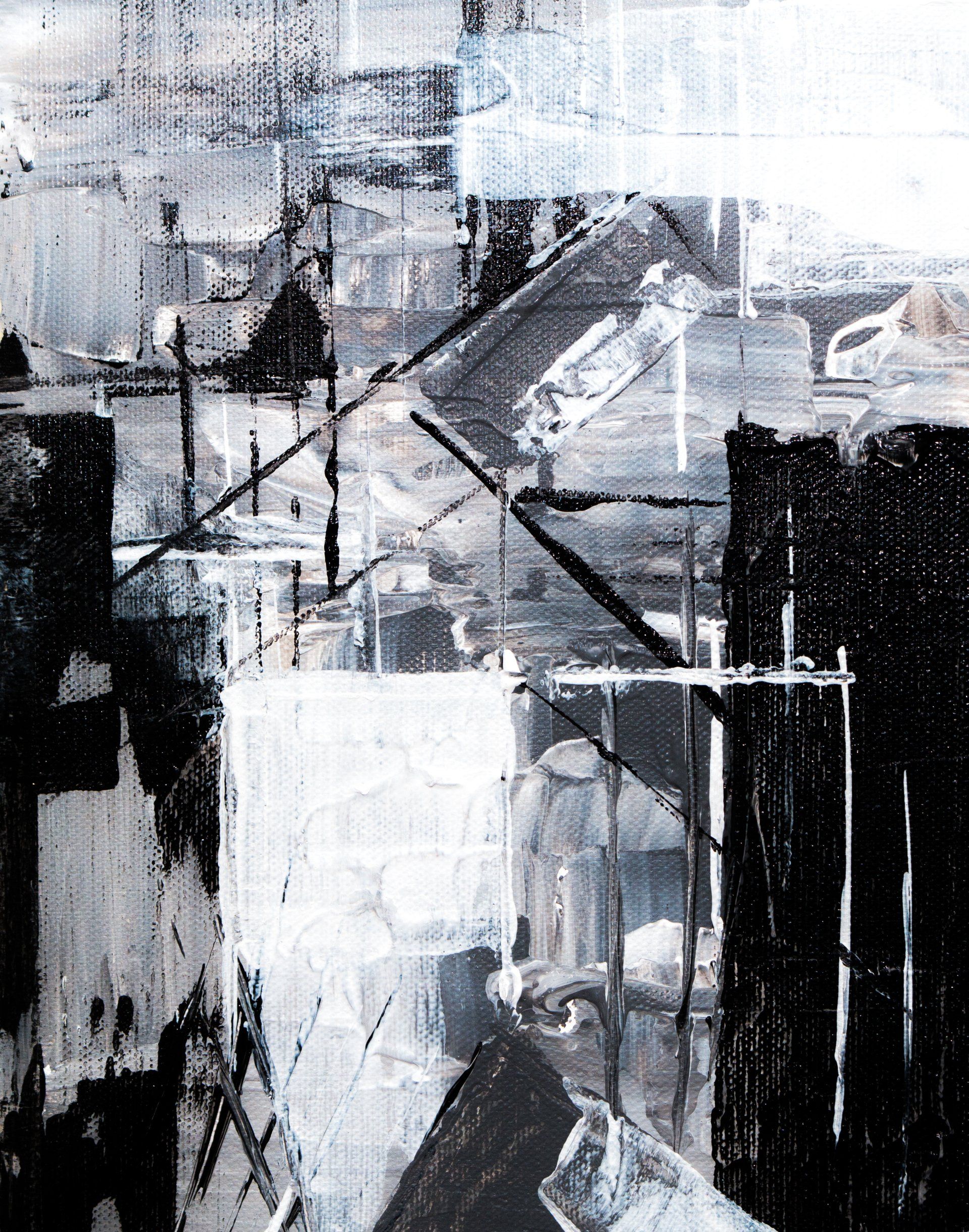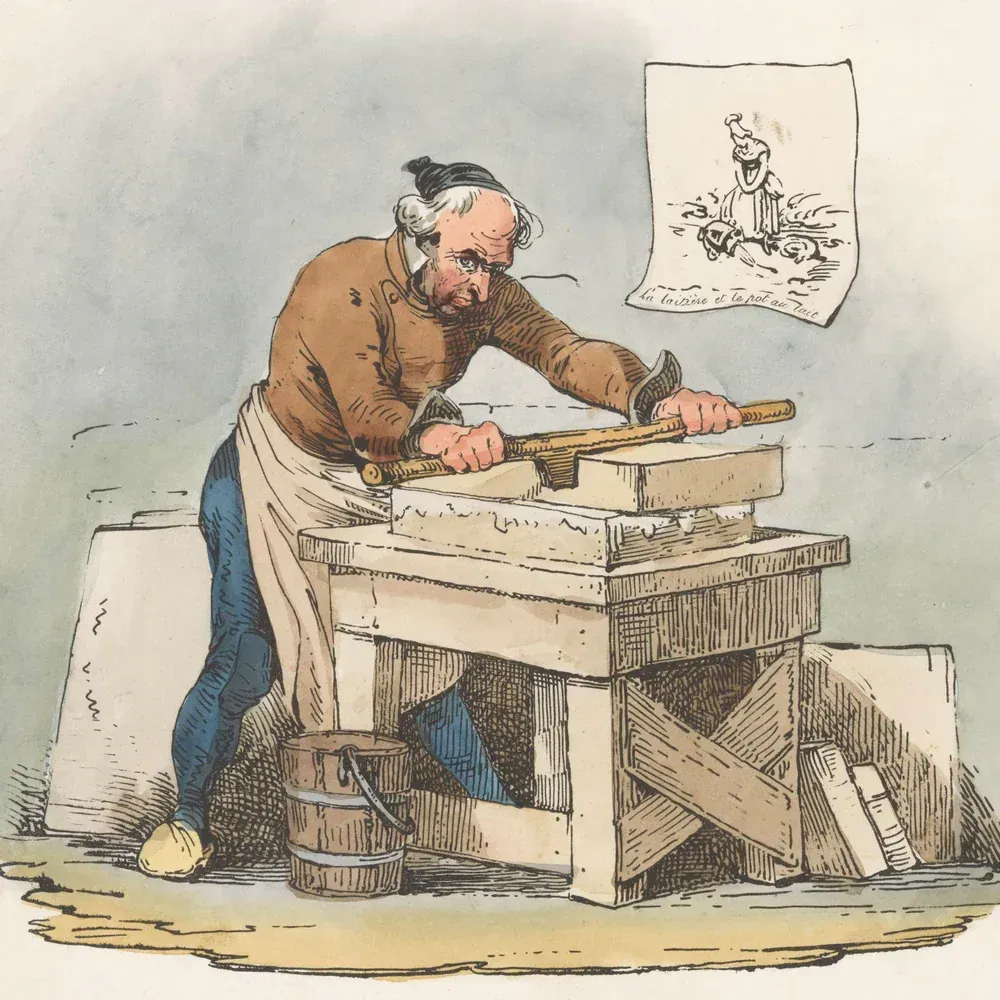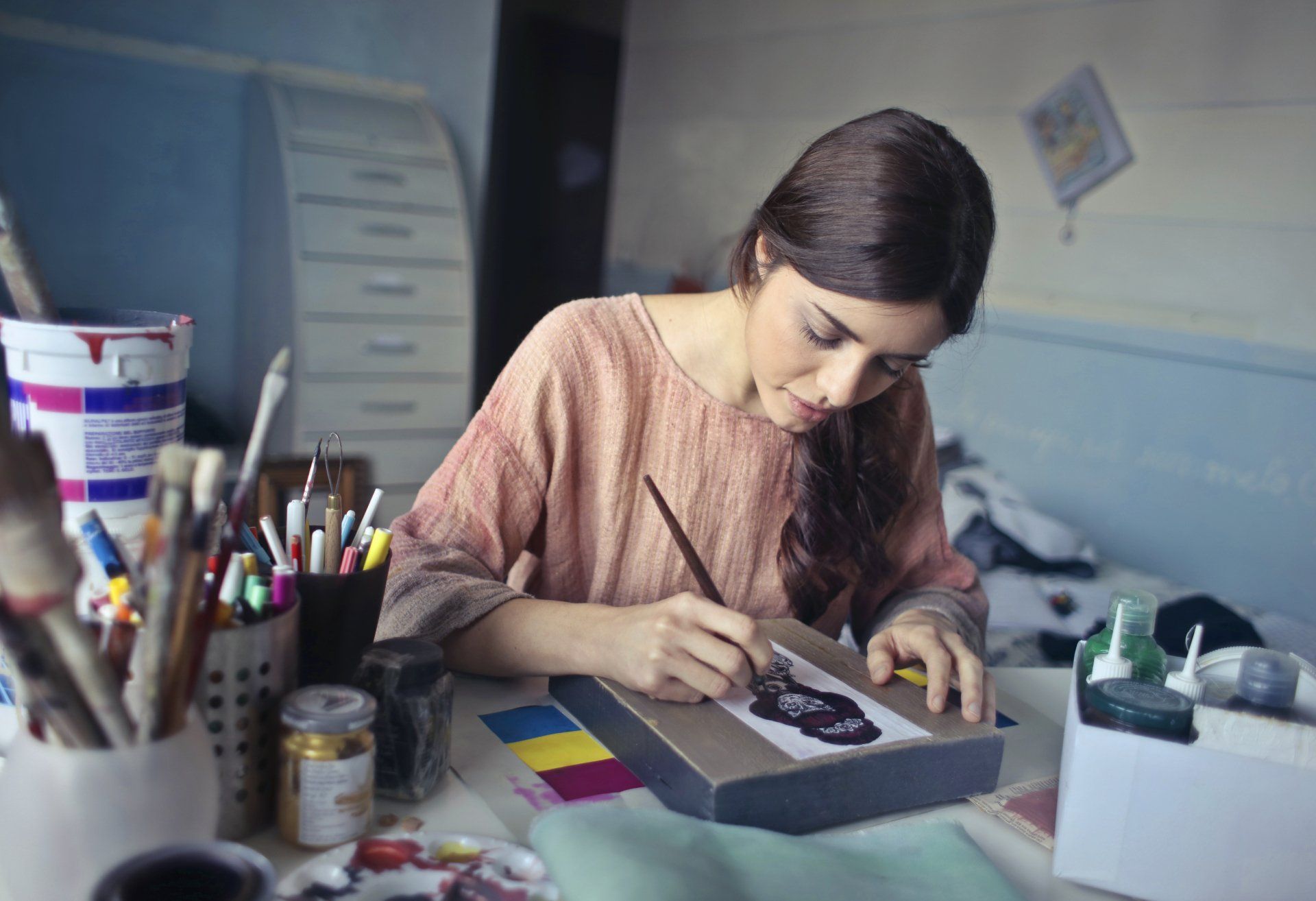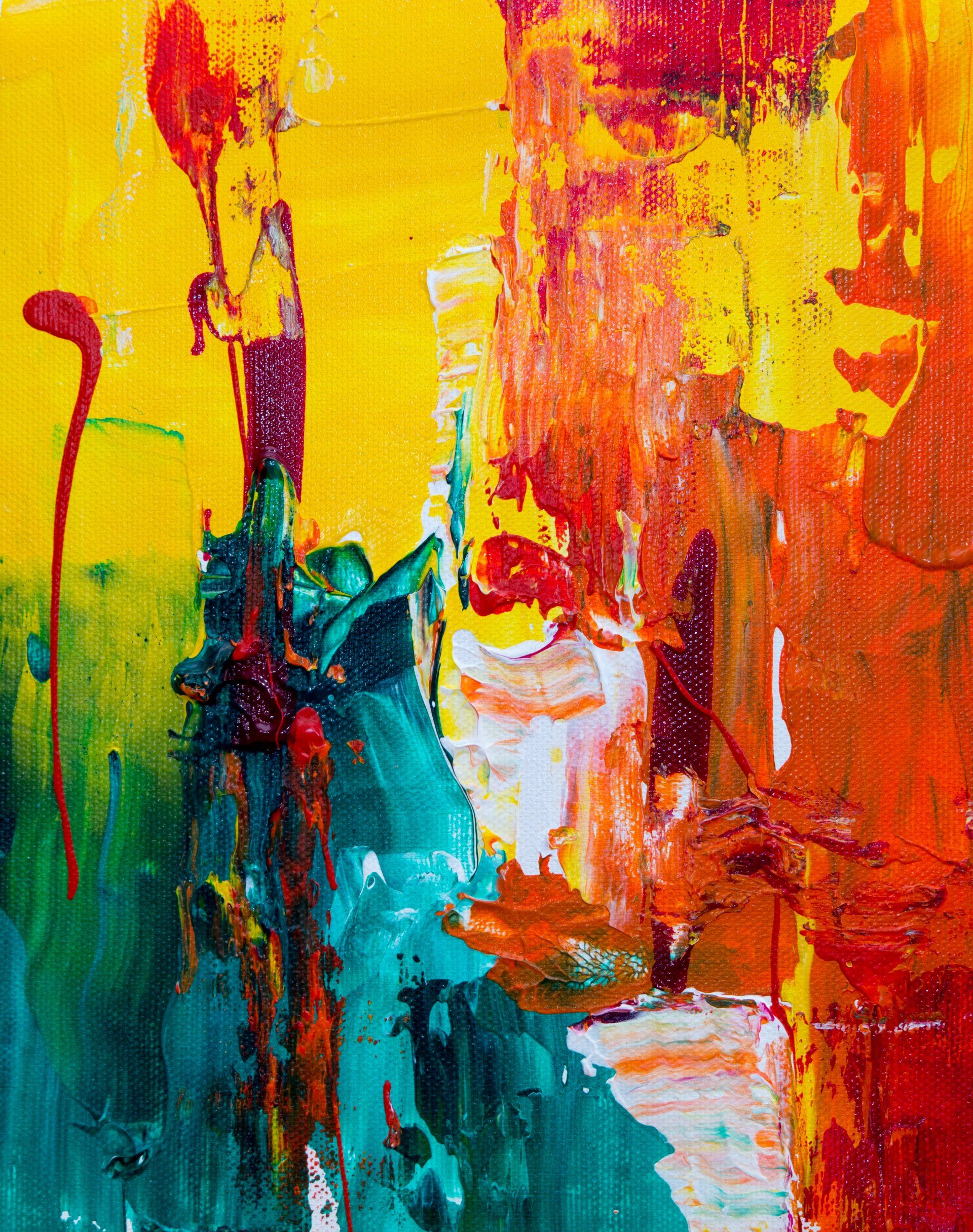ARTIST'S PROOF
Artist’s Proofs are usually the same as the edition in quality and image though they are outside the numbered edition. They are identified by “A.P.” or Artist Proof on the impression. Because they are artist’s proofs, they do have the ability to vary in colors. They are often retained by the artist or publisher, but frequently are used as an extension of the edition. The French version is also seen sometimes, Epreuve d’artiste or E.A.
BLIND STAMP
The same as chop but stamped with ink on verso of the print. See also Chop.
BON A TIRER
A literal translation from French Meaning "good to pull" and refers to the first print the artist decides to use for the edition. B.A.T.
CHINE COLLE
A Process in which one sheet of paper is adhered to another by pressuring, usually a thin paper laminated to backing during the print process.
CHOP
An identifying mark embossed on a print to identify the workshop, printer or publisher. Different from Chop Mark used as an identifying signature stamped on the artwork. Common in Asian prints.
COLOR SEPERATIONS
Proofs of each separate color of a multicolor print. Used in layering process of printing one on top of the other.
COLOR TRIAL PROOF
This term may be used to annotate Trial Proofs or T.P. These proofs may be done using the same plates as in the edition, but the color can vary from those used in the edition. Sometimes these are signed and sold by the artist or given to the printer.
DECKLE EDGE
The uneven edge on handmade paper or mould on paper. Deckled edges can also be achieved by the artist tearing freehand the edge of the paper to give it an intended uneven edge.
DRYPOINT
Used in Etching, it is drawing on metal plate with a needle of hard steel, often with a diamond point. The groove that is created hold the ink and the “burr” that is formed along the edge of the scratch from the displaced metal traps additional ink for a soft and rich effect.
EDITION
Total number of prints pulled from one image and represents the largest body of work for sale from that image. These prints are consecutively numbered to show that the edition is limited by publisher or artist. Example: 25/300 means that this is the 25th print in an edition of 300. Editions vary in size and sometimes are duplicated on different types of paper or in different color states. It is good to know what the entire edition consists of.
ENGRAVING
A method of drawing that employs a burin or graver to cut or incise on a metal plate. Different from drypoint, this method actually removes displaced metal creating a clean and exact line.
ETCHING/AQUATINT
An intaglio Process in which the lowered printing areas are bitten and etched by acid. The drawing and preparation of the plate can be accomplished with a variety of techniques dealt with elsewhere in this glossary. See Hardground, Sugar Lift and Softground. Aquatinting is a process of creating soft pits to the plate by the use of acid and resists that allows the ink to hang gently on the surface of the plate imitating a watercolor effect.
GICLEE
French for “to spit” the Giclee printing process is new and a result of the digital world. Artwork digitally captured is processed through a computer and then can be printed out on any number of surfaces from paper to canvas to mimic the original.
HORS DE COMMERCE
These prints are outside the edition but are the same as the edition and are used as gifts or payments to those involved in the production of the edition. They are designated H.C. opposite the artist’s signature.
IMPRESSION
A term applied to any work from a printing element.
INTAGLIO
A general term covering the printing process such as engraving, aquatint, mezzotint, and etching. Any process in which the image is cut, engraved or etched below the surface of a metal plate. The typical plate materials are made of zinc, copper or steel.
LIGHT SENSITIVE PLATE
A Plate treated with a light sensitive coating which all receive a photographic image either in lithographic or intaglio processes.
LINE ENGRAVING
A Print Made by using a metal plate cut with an engraving tool.
LINOCUT
Relief Process in which the image is cut into the linoleum block. The printing surface being the raised portions of the block. Color linocuts can be made from one block of linoleum and are called Reduction linocuts and by multiple blocks printed in layers.
LITHOGRAPHIC CRAYONS AND PENCILS
Crayons and pencils of a greasy substance used in drawing for lithography.
LITHOGRAPHY
A process based on the natural repulsion between the grease and water. Image is drawn on stone, aluminum or zinc plates, or both with greasy drawing materials. The image is then chemically processed so that the drawn area accepts grease (ink) and the non - image area water. Unlike intaglio printing the image and non-image areas are both on the same plane or level.
MEZZOTINT
An intaglio process in which the surface of the plate is scored by a spur like"rocker" so that it is completely roughened. The plate is then smoothed in areas to produce modulated tones of light and dark values.
SPIT BITE
A method in which the acid is applied directly to the plate and then quickly removed by any variety of liquids. The acid eats the surface of the plate to varying depths and allows the ink to hang into those recesses.
SQUEEGEE
A tool used in silkscreen to apply ink or paint to material to be printed. A wooden bar and rubber blade forces ink through the screen. A squeegee allows for an even spread of ink through the screen.
STATE PROOF
The alteration of an editioned image, plate, stone or stencil creating a new or related image. The new image may be printed in an edition with all impressions designated "state" I, II, III, IV, or more.
STENCIL PRINT
A print made by applying color to an etching plate by use of a metal or paper stencil before printing by rolling the color onto an inked plate.
STONE
Bavarian limestone is used in the medium of lithography. This is the element that the artist draws on to create the print image. Bavarian limestone is no longer being quarried and are in very short supply. Metal plates have taken over most of used lithographic surfaces now.
SUGAR-LIFT/GROUND
The Image is drawn on the plate with brush or pen and sugar ink (a mixture of sugar and India ink). The plate is covered with hardground and impressed in hot water to dissolve the sugar, lifting the hardground with it. The plate is then etched in the normal manner.
TRANSFER
Method of drawing in which artist works on a specially coated paper or surface other than the intended printing element. The Drawing is then transferred to metal or stone which is then processed for printing.
TRIAL PROOF
A proof that varies from the edition either in color, size, drawing, printing order, etc. these proofs are usually pulled before the artist has arrived at the final decision for the edition. These prints are usually unique impressions which may be retained by the artist and are not numbered in any manner. Designated T.P.
TRANSFER PAPER
Paper used by the artist to draw on that is transferred to plate or stone. With this method the image need not be drawn in reverse.
VEGETABLE PRINT
A print using a vegetable such as a potato as the inked element. The surface of a potato is carved out in relief and then used as a stamp.
WATERMARK
The mark that paper makers form in their papers by sewing the design into the mold before the papermaking process. The watermark can be seen when held to the light as it is more translucent than the light.
WOOD CUT
A relief process in which the image is cut in a block of wood with tools such as knives, gougers or chisels. The image is inked with a roller, paper is applied to the surface and the back is then rubbed by hand or with a rubbing tool, transferring the image to the paper.
WOOD ENGRAVING
A relief process in which the image is cut into the end grain of a block of wood using engraving tools. This process produces a very fine white line.
ZINC PLATE
Used for both lithography and intaglio processes. This is the plate that is used to draw or etch on before the inking and then printing.






